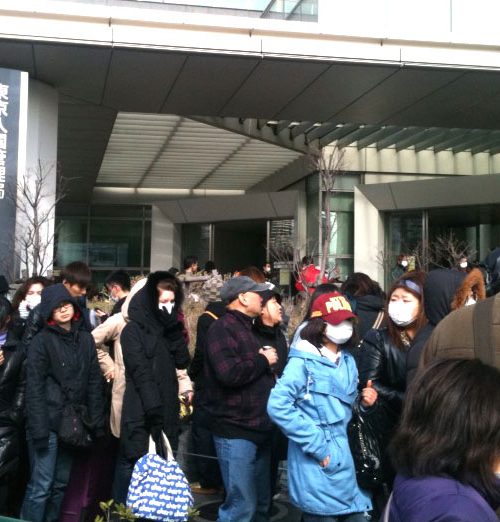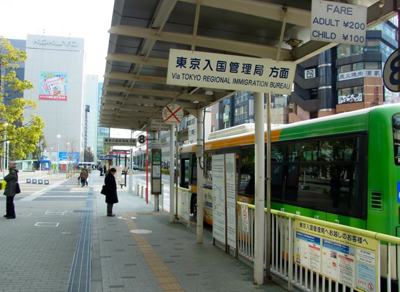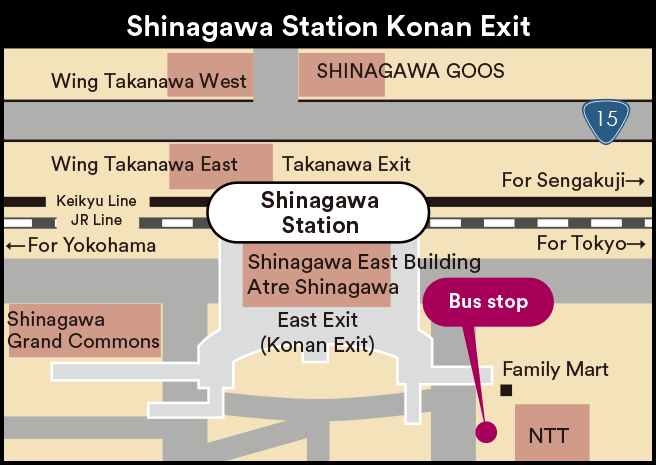If you are a new resident to Japan – visiting the Tokyo Regional Immigration Bureau (東京入国管理局) / (Tokyo Immigration Office) is likely something that you will have to do.
In this blog post we hope to answer some of the most frequently asked questions about Immigration in Tokyo and to give you vocabulary that you will need while visiting.
Useful Vocabulary for the Tokyo Immigration Office
- Certificate of Eligibility (CoE) –Zairyu Shikaku Nintei Shomeisho – (在留資格認定証明書)
- Tax Payment Certificate – Kazei Shoumeisho – (課税証明書)
- Tax Calculation Certificate – Nouzei Shoumeisho – (納税証明書)
- Residence Certificate – Juminhyo – (住民票)
- Tax Withholding Certificate – Kyūyo Shotoku Genzenchōshū-hyō – (給与所得源泉徴収票)
- City Office – Shi-yakusho – (市役所)
- Revenue Stamp – Shunyu Inshi – (収入印紙)
- Application for Extension of Period of Stay – Zairyū kikan kōshin kyoka shinsei-sho – (在留期間更新許可申請書)
- Application for Change of Status of Residence – Zairyū shikaku henkō kyoka shinsei-sho – (在留資格変更許可申請書)
- Application for Permanent Residence – Eijū kyoka shinsei-sho – (永住許可申請書)
- Apply for a visa. – Biza o toru – (ビザをとる)
- For a Japanese visa to expire – Biza ga kireru – (ビザが切れる)
- To update your visa – Biza o koshin suru – (ビザを更新する)
- To apply for your visa – Biza o shinseisuru – (ビザを申請する)
- Period of Extension – Kikan o encho suru – (期間を延長する)
You may need to ask your manager to take a half-day off when you visit the Tokyo Immigration Office. The Tokyo Regional Immigration Bureau is only open Weekdays during regular business hours. This means that you will have to leave work or take time off.
Here is an example dialogue that will teach you how to ask your manager in Japanese for a half-day off to visit Immigration.
Example Dialogue – (While at work speaking with a colleague about the Immigration Office):
A:もうすぐビザが切れちゃうから、また入管に更新に行かないといけない。
Mōsugu biza ga kire chaukara, mata nyūkan ni kōshin ni ikanaito ikenai.
My visa will expire soon – so I will have to visit immigration to update it.
B: じゃあ、部長に言って半休とった方がいいよ。すごく込むから朝早く行った方がいいって、ジョンさんが言ってた.
Jā, buchō ni itte hankyū totta kata ga ī yo. Sugoku komukara asa hayaku itta ho ga ītte, Jon-san ga itteta.
Well then, you better ask your manager for half-day off. John was saying that its better to get there really early because it gets very crowded.
A: うん、そうする。部長になんて言ったらいいかな。
Un,-sō suru. Buchō ni nante ittara ī ka na.
I will do that. What is the best way to ask the director?
B: 「すみません、入管にビザ更新の手続きをしに行かないといけないので、来週半休をいただいてもいいでしょうか。」
Sumimasen, nyūkan ni biza kōshin no tetsudzuki o shi ni ikanaito ikenainode, raishū hankyū o itadaite mo īdeshou ka.
“I’m sorry I have to visit the immigration office to apply for a visa renewal, so may I have a half-day off next week?”
A: ありがとう!
Arigatou!
Thanks!
F.A.Q. Tokyo Regional Immigration Bureau
Where is the Tokyo Immigration Office?
(東京入国管理局)
Where is the bus stop at Shinagawa (品川) Station?
The Tokyo Regional Immigration Bureau Bus is the #8 bus – which can be found by going left on the walkway and taking the stairs down in-front of the family mart from the Konan (East) exit of Shinagawa (品川) Station. You can see how to get there from the image above – as well as the google map below – all of the blue bus icons are different stops and you will see the #8 bus marked as in the photo above.
What time should I arrive?
Tokyo Regional Immigration Bureau normally has a line of people waiting for it to open starting from 7:30 most mornings. Mondays and Fridays are especially busy due to it not being open on weekends.
The counters that accept applications for Visa Extensions and Certificate of Eligibility open from 8:30 and the Counters processing visa extensions open from 9:00. Applications are assigned a number and are handled on a first-come-first-serve basis.
Our advice would be to arrive early with all of your documents prepared – and wait outside in the line for early applications. In our experience If you receive a application number lower than 50 – you should not have to wait more than 1 hour to be processed.

What documents do I need for my Japanese Visa application?
We can’t give specific advice because it depends on what you are applying for but generally you will need the following:
- Passport Photo (Taken within the past 3 months)
- Filled Application Form (Varies based on application type)
- Supporting Application Documents (Varies based on application type)
For a list of required documents for Japanese Visa Applications – Click Here
There are several documents needed for most applications – the most popular being:
- Taxation Certificate – Kazei Shoumeisho – (課税証明書) – Available at City Office
- Tax Payment Certificate – Nouzei Shoumeisho – (納税証明書) – Available at City Office
- Residence Certificate – Juminhyo – (住民票) – Available at City Office
- Tax Withholding Certificate – Kyūyo Shotoku Genzenchōshū-hyō – (給与所得源泉徴収票) – Issued Yearly by Employer
Is there anything else I should bring?
Food! 😉 There is a Family Mart on the first floor of the immigration center – but there is nothing surrounding it – meaning long lines and potentially missed call numbers for your application. We recommend that you bring some water and snacks with you so that you don’t have to wait in a long line at family mart. We would also recommend to bring something to read as wait times are unpredictable.
Are you a expat / foreign professional in Tokyo? Coto Japanese Academy helps many foreign professionals with their Japanese learning. Click below to learn more!

